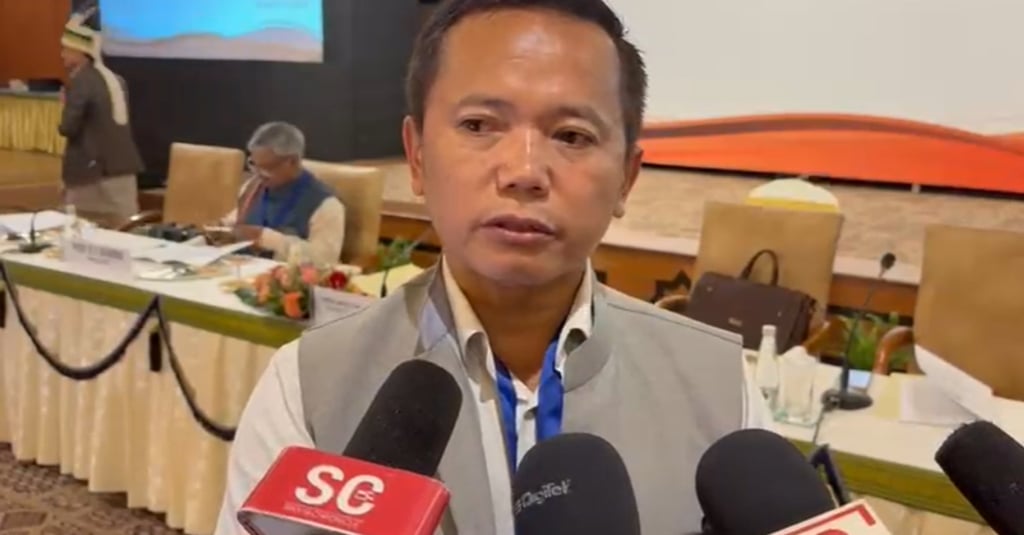Sikkim’s 12 communities have waited long enough, now the Centre must act : Jacob Khaling
This submission, widely described as a historic and potentially transformative moment, further strengthens Sikkim’s case at the national level.
LOCAL


Sikkim witnessed a historic moment today as the long-pending demand of the state’s left-out communities for recognition as Scheduled Tribes (ST) moved one step closer to reality. In a high-level meeting held in the national capital, the Sikkim State High-Level Committee officially submitted its detailed anthropological report to Chief Minister Prem Singh Tamang and the State Government. This report, which has been years in the making, documents the history, culture and social practices of 12 communities that have long awaited inclusion in the Scheduled Tribes list.
The meeting was attended by all members of the High-Level Committee, along with representatives and office bearers from associations of the 12 left-out communities. Officials from the concerned government departments and resource persons from different backgrounds were also present. Together, they finalized the anthropological report, which has now been handed over to the State Government for further action.
Speaking about the significance of today’s program, Jacob Khaling, Political Secretary to the Chief Minister, said, “Today’s submission marks the completion of our task. The committee has compiled all the necessary details, and the future roadmap is now with the Central Government. It is for them to take the next steps.”
For decades, 12 communities of Sikkim — Bhujel, Gurung, Jogi, Khas, Kirat Rai, Kirat Dewan Yakha, Majhi, Mangar, Newar, Sanyasi, Sunuwar (Mukhia), and Thami — have been demanding their rightful place in the Scheduled Tribes list. Their exclusion has remained a major issue tied not only to identity and recognition but also to the wider demand for Sikkim to be formally declared a Tribal State.
The role of the High-Level Committee was to collect historical documents, cultural records, and social background details of these communities and present them in an organized and scientific way. Today’s submission marks the official completion of that task.
Khaling said that the report includes detailed anthropological studies, community records, and documentation that show the distinct identity and tribal characteristics of the left-out groups. He stressed that the committee had worked hard to bring together voices from every corner, making sure the final document was inclusive and comprehensive.
With the committee’s work now officially concluded, the State Government will forward the report to the Central Government along with its endorsement. This will set the stage for the Union Government to take the necessary steps to include these 12 communities in the Scheduled Tribes list through constitutional and legislative processes.
Jacob Khaling added, “We have fulfilled our responsibility at the state level. Now it is for the Central Government to examine this report and take the matter forward. The aspirations of the people of these communities, and indeed of Sikkim as a whole, depend on the timely recognition of this demand.”
The day began with another milestone when the Ethnographic Committee on Sikkim’s tribal inclusion also submitted its final report to Chief Minister Prem Singh Tamang in New Delhi. This submission, widely described as a historic and potentially transformative moment, further strengthens Sikkim’s case at the national level.
The Delhi meeting, chaired by the Chief Minister, was closely followed in Sikkim and across the country. Many see it as a decisive step towards fulfilling the state’s decades-old aspiration of being declared a Tribal State. Senior officials from the Chief Minister’s Office (CMO) and the Social Welfare Department joined the deliberations, underlining the importance the state government is placing on the issue.
The recognition of these 12 communities has implications that go beyond individual benefits. Inclusion in the ST list will mean access to constitutional safeguards, social justice measures, and representation in political structures. It is also seen as a crucial step in strengthening Sikkim’s claim for full Tribal State status, which has been one of the long-standing demands of various social and political organizations in the state.
